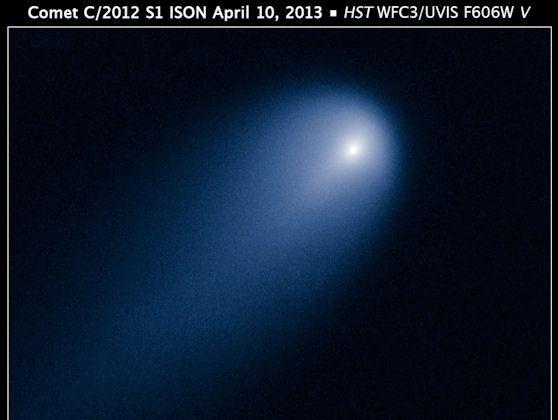People can now see the comet ISON through telescopes as it gets closer to Earth.
“Comet ISON is approaching Mars in the pre-dawn sky,” astronomer Carey Lisse, the head of NASA’s Comet ISON Observing Campaign, said in a statement. “It is invisible to the naked eye, but within reach of backyard telescopes.”
The comet is approaching the Sun, an encounter it may or may not survive. Because its orbit is bringing it so close to the sun, it is called a sungrazer.
Russian astronomers Vitali Nevski and Artyom Novichonok found the comet in Sept. 2012.
The comet, a loosely packed mixture of dust and gasses trapped in a low-density iceball, should become visible in the Northern Hemisphere in early December to the naked eye.
According to the blog ISON Atlas, the comet will be visible throughout the entire month in the morning sky. Starting in the middle of December, it will become visible in the evening sky.
“December is when most people will see Comet ISON, I think. Not just because that’s when it should be at its brightest – having rounded and been assaulted by the heat and radiation of the Sun – but because, moving away from the Sun, heading back into the colder depths of the solar system, it will be visible, for the first time, in both the morning and evening sky to,” writes amateur astronomer and blogger Stuart Atkinson. “In fact, after Dec 21st the comet won’t set, it will be so close to the Pole Star, around which everything in the sky revolves, that it will be visible from sunset to sunrise.”
ISON will fly through the sun’s atmosphere at a little more than a million kilometers from the sun’s surface.
“If the comet survives--a big IF--it could emerge glowing as brightly as the Moon, briefly visible near the sun in broad daylight. The comet’s dusty tail stretching into the night sky could create a worldwide sensation,” according to NASA.
An image from April taken with the Hubble Space Telescope, when the comet was 386 million miles from the sun (394 million miles from Earth) shows the comet’s structure.





